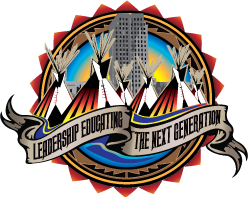About Us
International PowwowUnited Tribes Technical College International Powwow
The United Tribes Technical College International Powwow is held every year the weekend after Labor Day weekend in September. This is a contest powwow, where dancers and singers compete for prize money. Judges selected by the Head Dance Judges will evaluate a dancer’s performance based on knowledge and skill of their category; keeping time with the drum; and regalia. The UTTC International Powwow is one of the last large outdoor events on the northern Great Plains powwow circuit. For that reason, this annual event is known as the Home of the Champions.
What is a powwow?
The word powwow is a noun an Eastern Algonquian language used to describe a gathering of Native people; however, in Indian Country, the event is defined as a cultural celebration that features group singing and dancing by men, women, and children. Cultural traditions such as values and spirituality are passed from generation to generation during these social gatherings. Skilled Native American artisans travel across the country to attend various powwows to display and sell their hand-made goods. The powwow is a welcome opportunity to visit with friends and relatives, trade or sell Native arts and crafts, and enjoy great traditional and contemporary foods.
Men’s Traditional
Men’s traditional is one of the oldest dances. Regalia pays honor to different animals the Creator put on Earth and the movements of the hunter/gatherer. Dancers create their own regalia; breast plates made of bone or shell to protect against arrows; neck choker to protect against knives; a tomahawk or shield with symbols associated with the tribe. Some wear a plate or bustle made of eagle feathers or carry an eagle feather; the eagle being a sacred bird within the culture, a connection to the Creator.
Women’s Traditional
The women’s traditional dance is rhythmic and graceful, with repetitive movements. Women typically dance in a line around the circle, side by side. They move their feet up and down close to the ground, in time with the drum. Many carry a folded shawl draped over one arm and a feather fan. They raise the fan when they hear the “honor beats” (the louder sounds of a drum) to honor the drum and their male relatives. They may also carry a knife case and an awl on their belt. Dresses are in beautiful colors and beading, often made by the dancer, or a close and loving relative.
Men’s Grass Dance
There are differing interpretations of the origin of the grass dance. One is that the dance in to flatten the grass on a new camp or meeting site. Another is that it came from the Creator to help balance life. Movements can be similar to the men’s traditional dance. One particular movement involves dancing with one foot in place. Grass dance regalia consists of colorful ribbons, fabric and yarn that mimics the look of grass. The head dress is comprised of two feathers that twirl or rock as the dancer dances. As with every dance, the dancers follow the beat and the stop with both feet on the ground on the last beat of the drum.
Men’s Fancy
Men’s fancy is a modern dance for energetic for young men. A fancy dancer needs stamina and agility for the jumping, twirling and other rapid movements. The colors are bright, the regalia elaborate. Dancers often have two feather bustles, ribbons, and horse hair, along with bright head and armbands, and sometimes mirrors. A headdress of two eagle feathers is worn. Dancers bob their heads to keep the feathers constantly moving throughout the song. Fancy dancers often carry a decorated coup stick, as ancestors did in times of battle.
Women’s Fancy Dance
The women’s fancy shawl dance is a modern dance as well. Women used to wear either a blanket or a shawl over their head (it used to be called the blanket dance). Moves are very athletic involving quick steps and twirling. Women accentuate the twirling using the shawl as an extension of their arms. At the end of the shawl, there will often be ribbons flying in the air during twirls and kicks, all in time to the fast beat of the drum.
Powwow Etiquette
- Do not talk while an elder is speaking on the address system.
- Leave the lawn chairs around the area alone; they’re for the dancers. You may bring your own chair; please make room for others.
- Do not touch the dancers or their regalia.
- Please ask dancers before you take their photo. It is only polite to ask permission and some dancers may have spiritual reasons for avoiding photos.
- Photographers are asked not to enter the dance arena to make photos.
- Listen to the master of ceremonies. He will tell you when to take your hats and caps off during the powwow.
- When a blanket dance is announced, be prepared to donate a few dollars when the blanket passes. The money will be donated to the person or drum group being honored.
- Don’t be afraid to ask people around you to explain things that you may not understand. People are friendly and will be eager to share their knowledge.
